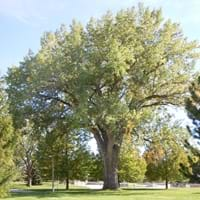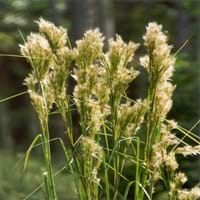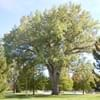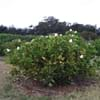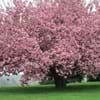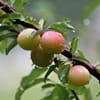Life Span
Perennial
Perennial
Origin
Northeastern United States, Mid-Atlantic United States, Southeastern United States, Central United States, Canada, Mexico
Caribbean, Central America
Types
Plains Cottonwood, Rio Grande cottonwood
Broomsedge Bluestem, Broomsedge
Habitat
bottomlands, Floodplain, Hardwood forests, Riverbanks
ditches, Grassland, Moist Ditches, Moist Soils, Roadsides
USDA Hardiness Zone
3-9
5-9
Sunset Zone
1a, 1b, 2a, 2b, 3a, 3b, 4, 5, 6, 7, 8, 9, 10, 11, 14, 15, 16, 17, 18, 19, 20, 21
H1, 3a, 3b, 4, 5, 6, 7, 8, 9, 14, 15, 16, 17, 18, 19, 20, 21, 22, 23, 24
Habit
Upright/Erect
Upright/Erect
Flower Color
Red, Green
Cream, Green, White
Flower Color Modifier
Bicolor
Bicolor
Fruit Color
White
Not Available
Leaf Color in Spring
Green, Gray
Green, Blue Green
Leaf Color in Summer
Green
Light Green
Leaf Color in Fall
Yellow
Gray Green, Yellow green, Bronze
Leaf Color in Winter
Not Available
Gold, Tan, Bronze
Leaf Shape
Toothed curved and flat petiole
Grass like
Plant Season
Summer, Fall
Fall, Winter
Sunlight
Full Sun
Full Sun, Partial Sun
Growth Rate
Very Fast
Medium
Type of Soil
Loam, Sand
Clay, Loam, Sand
The pH of Soil
Acidic, Neutral
Acidic, Neutral, Alkaline
Soil Drainage
Average
Average
Bloom Time
Early Spring
Late Summer, Early Fall, Fall, Late Fall, Early Winter
Tolerances
Drought, Soil Compaction, Wet Site
Not Available
Where to Plant?
Ground
Ground
How to Plant?
Seedlings, Stem Planting
Root Division, Seedlings
Plant Maintenance
Low
Medium
Watering Requirements
Keep ground moist, Requires regular watering, Requires watering in the growing season, Water daily during growing season, Water Deeply, Water more in summer
Keep ground moist, Water Deeply
In Summer
Ample Water
Lots of watering
In Spring
Ample Water
Moderate
In Winter
Average Water
Average Water
Soil pH
Acidic, Neutral
Acidic, Neutral, Alkaline
Soil Type
Loam, Sand
Clay, Loam, Sand
Soil Drainage Capacity
Average
Average
Sun Exposure
Full Sun
Full Sun, Partial Sun
Pruning
Remove dead branches, Remove hanging branches
Cut or pinch the stems, Remove damaged leaves, Remove dead branches, Remove dead leaves
Fertilizers
fertilize in growing season, Nitrogen
All-Purpose Liquid Fertilizer
Pests and Diseases
Aphids, Borers, Caterpillars, Insects
Red blotch
Plant Tolerance
Drought, Soil Compaction, Wet Site
Drought
Flower Petal Number
Not Available
Single
Foliage Texture
Medium
Coarse
Foliage Sheen
Glossy
Matte
Invasive
Sometimes
Sometimes
Attracts
Not Available
Birds, Butterflies
Allergy
Hay fever, Headache, Runny nose, sneezing
Not Available
Aesthetic Uses
Landscape Designing
Ground Cover
Beauty Benefits
No Beauty Benefits
Not Available
Environmental Uses
Air purification, Forms dense stands, Prevent Soil Erosion, Shadow Tree, Shelter for wildlife, Wildlife, Windbreak
Air purification, Food for animals, Food for birds, Provides ground cover, Wildlife
Medicinal Uses
Anodyne, Anthelmintic, anti-inflammatory, Febrifuge
Not Available
Part of Plant Used
Inner Bark, Leaves, Seeds
Seeds
Other Uses
Biomass for fuel, Used as firewood, Used As Food
Used as Ornamental plant
Used As Indoor Plant
No
No
Used As Outdoor Plant
Yes
Yes
Garden Design
Screening / Wind Break, Shade Trees
Container, Dried Flower/Everlasting, Feature Plant, Mixed Border, Rock Garden / Wall
Botanical Name
POPULUS deltoides
ANDROPOGON glomeratus
Common Name
Eastern Cottonwood
Bushy Beardgrass, Bushy Bluestem, Bushy Broom Grass
In Hindi
Eastern Cottonwood
Bushy Bluestem plant
In German
Eastern Cottonwood
Bushy Bluestem Pflanze
In French
Cottonwood Orient
plante buissonnante Bluestem
In Spanish
Cottonwood del Este
planta arbustiva andropogon
In Greek
Ανατολική Cottonwood
φυτό θαμνώδη BLUESTEM
In Portuguese
Cottonwood Oriental
planta arbustiva Bluestem
In Polish
Eastern Cottonwood
Krzaczaste Bluestem roślin
In Latin
Orientalium Poplar
Bushy bluestem herba
Phylum
Anthophyta
Magnoliophyta
Class
Dicotyledonae
Liliopsida
Order
Salicales
Cyperales
Family
Salicaceae
Poaceae
Clade
Angiosperms, Eudicots, Rosids
Angiosperms, Commelinids, Monocots
Tribe
Not Available
Andropogoneae
Subfamily
Salicoideae
Panicoideae
Season and Care of Eastern Cottonwood and Bushy Bluestem
Season and care of Eastern Cottonwood and Bushy Bluestem is important to know. While considering everything about Eastern Cottonwood and Bushy Bluestem Care, growing season is an essential factor. Eastern Cottonwood season is Summer and Fall and Bushy Bluestem season is Summer and Fall. The type of soil for Eastern Cottonwood is Loam, Sand and for Bushy Bluestem is Clay, Loam, Sand while the PH of soil for Eastern Cottonwood is Acidic, Neutral and for Bushy Bluestem is Acidic, Neutral, Alkaline.
Eastern Cottonwood and Bushy Bluestem Physical Information
Eastern Cottonwood and Bushy Bluestem physical information is very important for comparison. Eastern Cottonwood height is 3,050.00 cm and width 2,130.00 cm whereas Bushy Bluestem height is 120.00 cm and width 75.00 cm. The color specification of Eastern Cottonwood and Bushy Bluestem are as follows:
Eastern Cottonwood flower color: Red and Green
Eastern Cottonwood leaf color: Green and Gray
Bushy Bluestem flower color: Cream, Green and White
- Bushy Bluestem leaf color: Green and Blue Green
Care of Eastern Cottonwood and Bushy Bluestem
Care of Eastern Cottonwood and Bushy Bluestem include pruning, fertilizers, watering etc. Eastern Cottonwood pruning is done Remove dead branches and Remove hanging branches and Bushy Bluestem pruning is done Cut or pinch the stems, Remove damaged leaves, Remove dead branches and Remove dead leaves. In summer Eastern Cottonwood needs Ample Water and in winter, it needs Average Water. Whereas, in summer Bushy Bluestem needs Lots of watering and in winter, it needs Average Water.
